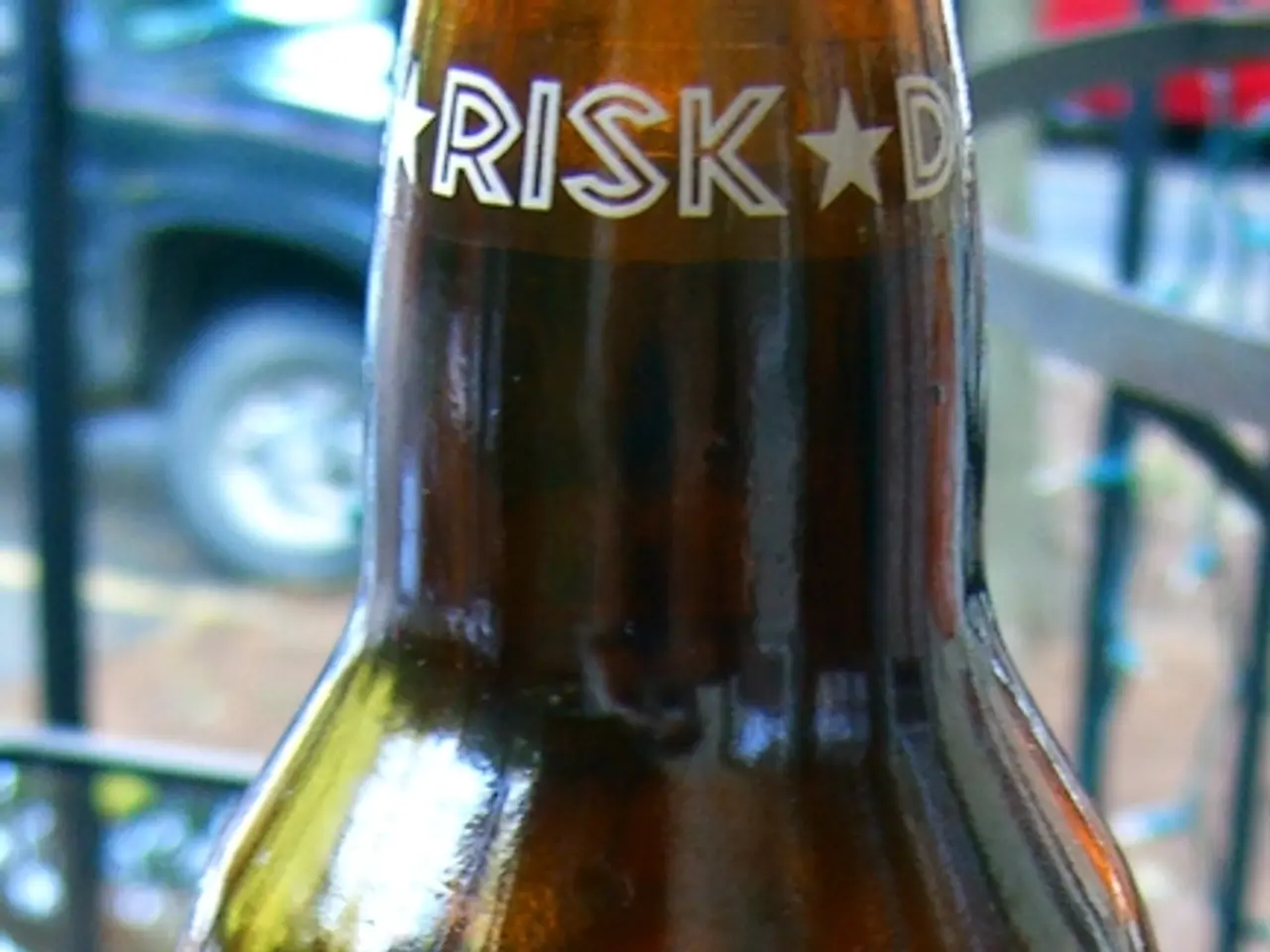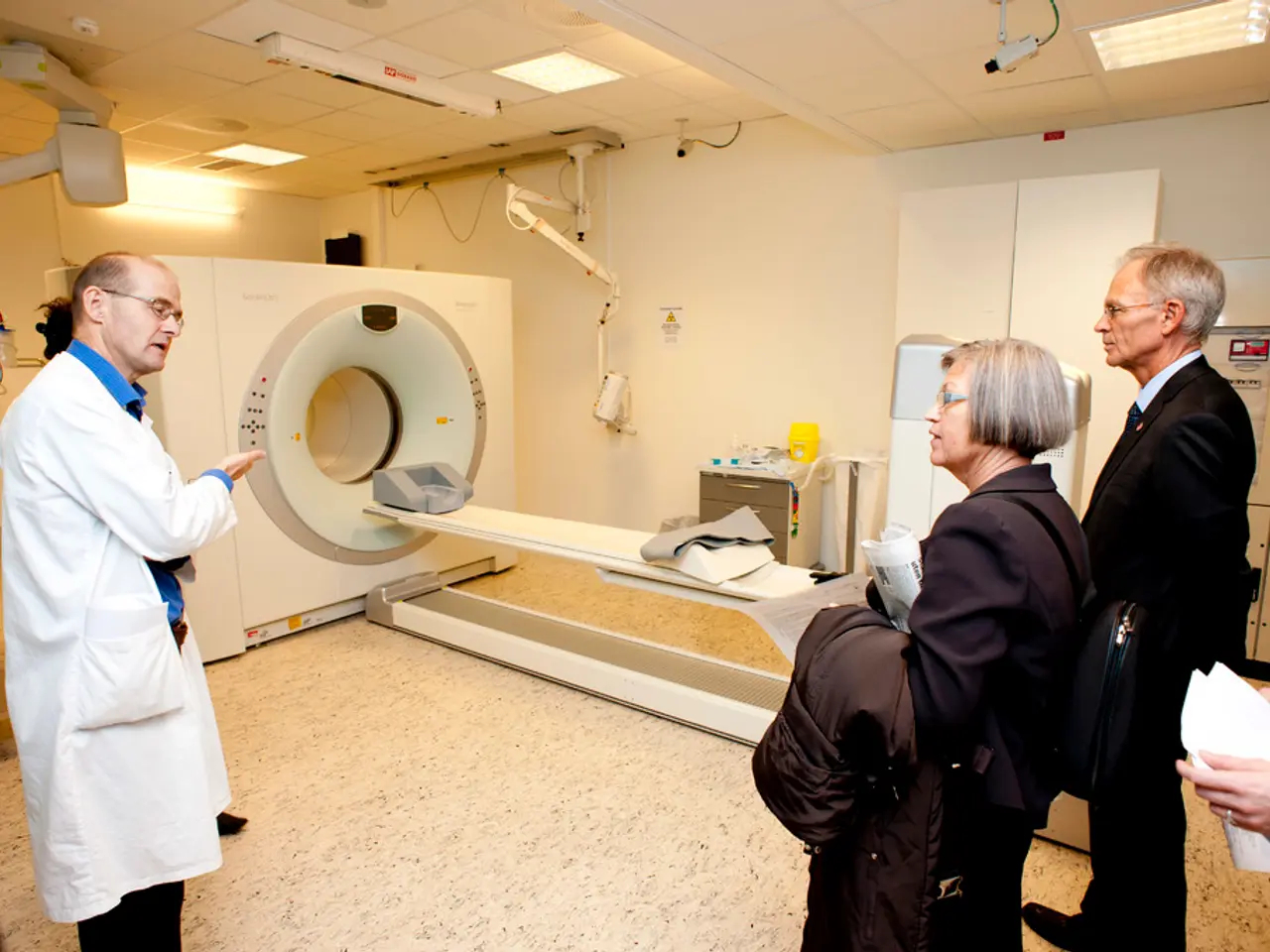Flushing Face After Consuming Liquid: Explanation of the Phenomenon
Facial flushing is a common experience, especially after consuming alcohol, but it can also be a sign of two distinct conditions: alcohol flush reaction or rosacea.
Alcohol Flush Reaction (Enzyme Deficiency)
An enzyme deficiency known as alcohol flush reaction can cause facial flushing. This condition arises from a deficiency of the enzyme aldehyde dehydrogenase 2 (ALDH2), which normally metabolises acetaldehyde, a toxic byproduct of alcohol breakdown. When ALDH2 is deficient, acetaldehyde accumulates after drinking alcohol, causing facial flushing, redness on the face, neck, shoulders, and sometimes the entire body, along with symptoms like nausea, headache, and a fast heart rate.
This condition is most common in East Asian populations, where 30 to 50% may experience this reaction, sometimes called "Asian flush". The health risks include an increased risk of esophageal cancer for those who continue to drink despite this reaction, likely due to acetaldehyde's toxicity.
Rosacea
Rosacea is a chronic inflammatory skin condition that causes facial redness, flushing, visible blood vessels, and sometimes acne-like bumps. Flushing in rosacea can come and go and may be triggered by multiple factors, including alcohol, heat, stress, or spicy foods. Unlike alcohol flush reaction, rosacea is not caused by enzyme deficiency but by immune and vascular dysregulation in the skin.
Rosacea itself is not directly linked to serious systemic health risks like cancer, but it can cause substantial cosmetic and psychosocial effects.
Comparing Facial Flushing Causes
| Aspect | Alcohol Flush Reaction | Rosacea | |----------------------|------------------------------------------------|-----------------------------------------| | Cause | ALDH2 enzyme deficiency → acetaldehyde buildup | Chronic inflammatory skin disorder | | Trigger | Alcohol consumption | Alcohol, heat, stress, spicy food, etc. | | Symptoms | Flushing, nausea, headache, fast heart rate | Facial redness, visible blood vessels, acne-like bumps | | Population prevalence | High in East Asian populations | Worldwide | | Health risks | Increased esophageal cancer risk if drinking | Primarily cosmetic, no direct cancer risk| | Physiological mechanism| Toxic metabolite accumulation causing vasodilation | Inflammation and vascular dysregulation |
Summary of Potential Health Risks
- Alcohol flush reaction is a serious warning sign; ongoing drinking with this enzyme deficiency increases risk of esophageal cancer and possibly other alcohol-related complications due to acetaldehyde toxicity. - Rosacea mainly causes chronic facial redness and discomfort without systemic health risks but may require treatment to manage symptoms and prevent worsening.
In conclusion, facial flushing after alcohol can be either an enzyme deficiency (alcohol flush reaction) or rosacea, and distinguishing between them involves assessing accompanying symptoms, pattern, and triggers. Alcohol flush reaction is a metabolic condition with important health risks, while rosacea is a dermatological condition primarily impacting skin appearance and comfort.
For those with rosacea, keeping track of drinking habits can help identify triggers for facial flushing. If facial flushing is bothersome and alcohol is a trigger, avoiding alcohol altogether may be the best solution. A series of laser treatments can shrink the superficial blood vessels in the skin to prevent facial flushing, but they are typically not covered by insurance.
References: [1] https://www.ncbi.nlm.nih.gov/pmc/articles/PMC3301365/ [2] https://www.ncbi.nlm.nih.gov/pmc/articles/PMC4214736/ [3] https://www.ncbi.nlm.nih.gov/pmc/articles/PMC5633425/ [5] https://www.ncbi.nlm.nih.gov/pmc/articles/PMC5325681/
- Maintaining a balanced diet that includes proper nutrition is essential for overall health, as poor nutrition can worsen the symptoms of both alcohol flush reaction and rosacea.
- A health-and-wellness routine that incorporates fitness-and-exercise, mental-health care, and skin-care practices can improve the appearance and health of the skin and help alleviate stress, which may potentially trigger facial flushing.
- Adopting a moderate alcohol consumption habit can help reduce the risk of developing alcohol flush reaction and its associated health risks, such as esophageal cancer.
- Embracing a holistic approach to health, including paying attention to mental health, diet, and exercise, can contribute to a well-balanced lifestyle that, in turn, may help minimize the frequency and intensity of facial flushing episodes.




